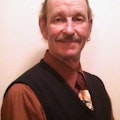Waterborne paint creates great finishes while reducing environmentally harmful emissions, yet switching over to a waterborne system does involve a certain amount of planning and preparation prior to making the move.
“Successful waterborne conversions occur when key best practices are incorporated into the conversion strategy,” says Jonathan Purifoy, U.S. waterborne field manager for DuPont Performance Coatings.
“To convert successfully, the entire body shop needs to be on board with the change,” adds Purifoy, who along with colleague Burt Palmer conducted a Wednesday NACE seminar on the topic.
“Take, for example, our co-presenter, Pete Latuff from Latuff Brothers, a body shop in Minnesota,” he continues. “They have been using waterborne technology for four years; they were an early adopter. When they first took on waterborne, there was a lack of experience and technical knowledge at the body shop. But the Latuff group learned together – they worked as a team.”
Purifoy goes on to explain how “the shop used proven waterborne best practices to develop their standard operation processes. Today, they are savoring the result of their teamwork, which includes increased productivity and a better appearance.”
Conducting a thorough shop audit is critical to success. This audit, which usually doesn’t take longer than two hours, should include a review shop air movement, application techniques and preparation processes, he says. The shop owner should arrange this step in advance of the actual conversion procedure.
“You look at everything from what sandpaper you’re using to the quantity and quality of your compressor air.” The relative humidity should not be more than 30 percent. “You don’t want overly humid air, but if it’s too dry that can be a problem as well.”
Addressing the situation can vary according to your particular climate. A shop in Minnesota, where it can be cold and damp, will likely differ from an operation in hot and sunny California. Ditto for the weather variations of Texas versus Florida, and each of the other 50 states.
“People will change their application (strategies) based on humidity – that’s the biggest factor – and the biggest impact seems to be in the booth itself: You can ‘cook’ the air to drop the humidity. If you have a cold and humid situation you can increase your booth temperature.”
Gun set-ups and pressure are other factors that go into the mix to ensure proper application and efficient dry times.
But perhaps the most important element is getting everyone on board with the changeover. “In order to thrive with waterborne, a body shop needs a team. It is a team decision, getting buy-in from the shop management as well as the painters,” Purifoy says.
Ownership and the painters will undergo advance training regarding the assorted detailed aspects of the system. As the changeover approaches, however, a party of sorts is in order for the rest of the staff, as they will also have a role in properly prepping the vehicles and ensuring a smooth process.
“The paint company would sponsor it and train the shop before the conversion begins,” he explains. “After work when the shop closes we’ll bring in pizza or sandwiches. It’s kind of like a pep rally; everyone will know that tomorrow is the big day.”
About the Author
James Guyette
James E. Guyette is a long-time contributing editor to Aftermarket Business World, ABRN and Motor Age magazines.
